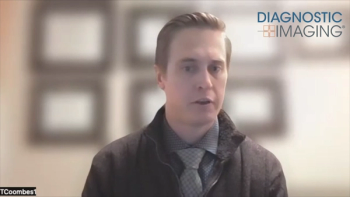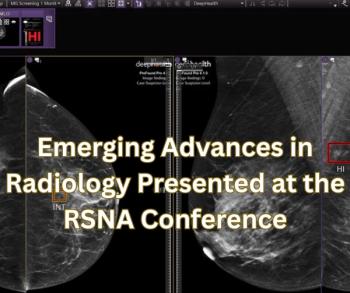
Redefining Fibrocystic Changes on Breast MRI: Can It Reduce the Number of Benign Biopsies?
Given the broad range of fibrocystic changes, the authors of a recent study suggest that more precise diagnosis of breast MRIs could significantly reduce unnecessary biopsy procedures.
A recent study published in the
The high prevalence of benign fibrocystic change (FCC) reported following MRI-guided biopsies underscores the need for careful review to establish radiologic–pathologic correlation, according to the study authors. Noting that FCCencompasses many pathologic entities, lead author Angela Choe, MD said more precise identification of these changes on breast MRIs may have an impact in reducing benign biopsies.
“There are many pathologic entities under the umbrella of fibrocystic change of the breast and we need to be able to identify the common imaging features of this benign entity when reading breast MRIs to try to decrease the number of benign biopsies that we perform,” explained Dr. Choe, who is affiliated with the department of radiology at the Penn State Health Milton S. Hershey Medical Center in Hershey, Pa.
The study authors maintained that more precise terms for describing FCC on breast MRI would be in keeping with the standard Breast Imaging Reporting and Data System (BI-RADS).
“The term ‘fibrocystic change’ should not be used when referring to a pathologic result,” emphasized Dr. Choe. “We should ask for specific diagnosis when this phrase is used.”
Fibrocystic changes encompass a wide range of benign processes, according to the study authors. They noted that benign entities may include ductal hyperplasia and sclerosing adenosis, cysts, apocrine metaplasia, and stromal fibrosis.
The MRI appearance of FCC can be diffuse or focal with diffuse FCC commonly presenting as non-mass enhancement (NME) with persistent kinetics and focal FCC often presenting as an irregular mass with variable enhancement patterns.
While the majority of FCC are benign, the study authors noted that coexisting malignancy is possible, pointing to one study that demonstrated malignancy in 20.5 percent of NME cases and atypia in 11.5 percent of cases.
“There are no specific MRI imaging findings to correlate with benign entities,” noted Dr. Choe. “Sometimes, benign entities show malignant features on MRI, necessitating a biopsy. When there has been adequate sampling and concordance, a follow-up MRI in one year is acceptable.”
To help determine the difference and guide management, the study authors stressed the importance of careful radiologic–histopathologic correlation. Clinical symptoms in premenopausal women can include pain, nipple discharge, breast lumps, or discrete masses, according to the study authors.
Referencing other research, Choe and colleagues noted that homogeneous or clumped internal enhancement, type 3 kinetics, and low T2 signal have been associated with malignant FCC. They add that another study identified 16 descriptors to distinguish ductal carcinoma in situ from FCC, including wash-in, the blooming sign, washout, adjacent vessel sign, T1 signal, and shape.
The study authors recommended biopsy in the presence of suspicious features, such as irregular or spiculated masses as well as linear or segmental NME.
Dr. Choe added that ongoing research is assessing the potential of diffusion-weighted imaging to differentiate benign from malignant breast lesions.
Newsletter
Stay at the forefront of radiology with the Diagnostic Imaging newsletter, delivering the latest news, clinical insights, and imaging advancements for today’s radiologists.




























